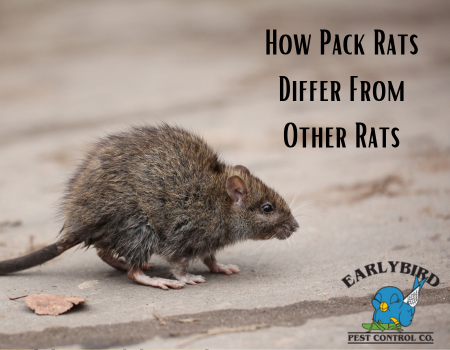Rats are a diverse and adaptable group of rodents found in various ecosystems worldwide. Among these, pack rats, also known as woodrats, stand out as a distinct subgroup with unique characteristics that set them apart from other rats. Let us delve into the features that differentiate pack rats from their rodent relatives, shedding light on their behavior, habitats, and ecological roles.
What Makes Pack Rats Different Than a Common Rat?
- Taxonomy and Classification:
A pack rat belongs to the genus Neotoma, a group within the family Cricetidae. While they share the same family with other rats, such as Norway rats and black rats, pack rats are taxonomically classified under their own genus due to their distinctive traits.
- Physical Characteristics:
One of the notable differences between a pack rat and other rats lies in their physical appearance. Pack rats typically have a hairier and fluffier tail compared to the more scaly tail of some other rat species. Their fur coloration varies among species but often includes shades of brown, gray, and white.
- Behavioral Traits:
The behavior of a pack rat sets them apart from many other rat species. One defining characteristic is their tendency to collect and hoard various objects in their nests, including shiny items, plant materials, and even small artifacts. This unique behavior has earned them the nickname “pack rats” and showcases their innate drive to gather and store items for future use.
- Habitat Preferences:
While many rat species are highly adaptable to urban environments, a pack rat tends to favor natural habitats. They are commonly found in deserts, forests, and shrublands across North and Central America. Their nests, often constructed with plant materials, are situated in sheltered locations like crevices, caves, or the bases of trees.
- Dietary Habits:
The dietary preferences of pack rats also distinguish them from other rats. They are primarily herbivorous, feeding on a variety of plant materials such as leaves, twigs, seeds, and fruits. However, their diet may include insects and other small invertebrates, adding a layer of flexibility to their feeding habits.
- Unique Adaptations:
Pack rats have developed specific adaptations to thrive in their chosen environments. Some species, for example, possess fur-lined cheek pouches that aid in carrying and transporting materials back to their nests. This adaptation is especially useful in arid regions where resources might be scattered.
- Social Structure:
The social structure of pack rats differs from that of many other rat species. While some rats, like Norway rats, are known for their social hierarchy and cooperative living, pack rats are generally more solitary. They establish and maintain territories, and encounters between individuals may lead to territorial disputes.
In the vast and diverse world of rodents, pack rats stand out as a unique and fascinating subgroup. Their distinctive physical characteristics, behaviors, habitat preferences, and adaptations set them apart from other rats, showcasing the diversity and adaptability of these small mammals. As we continue to unravel the intricacies of the natural world, understanding the differences between pack rats and their rodent kin contributes to a deeper appreciation for the complexities of biodiversity and the various ecological niches occupied by these remarkable creatures.


Recent Comments